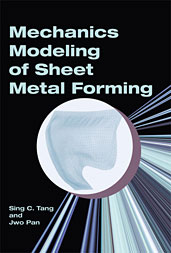Technical Paper
An Analytical Load Distribution Solution for Bearings
2012-04-16
2012-01-0756
An analytical load distribution solution for calculation of the loads exerted by the rolling elements on the outer raceway in cylindrical roller bearings under radial loading is proposed in this paper. The loads exerted by the rolling elements are obtained based on an assumption that the profile of the maximum contact pressures of rolling elements resemble the profile of the contact pressure of the corresponding lumped cylinder. Based on this assumption, an analytical load distribution solution which gives the loads exerted by the rolling elements on the outer raceway is derived based on the non-conforming contact solution of Hertz and the conforming contact solution of Persson. These loads can be calculated from the analytical solution with the total applied load and the normalized contact pressure profile of the corresponding lumped cylinder. Two-dimensional finite element analysis was conducted to validate the proposed analytical solutions.

